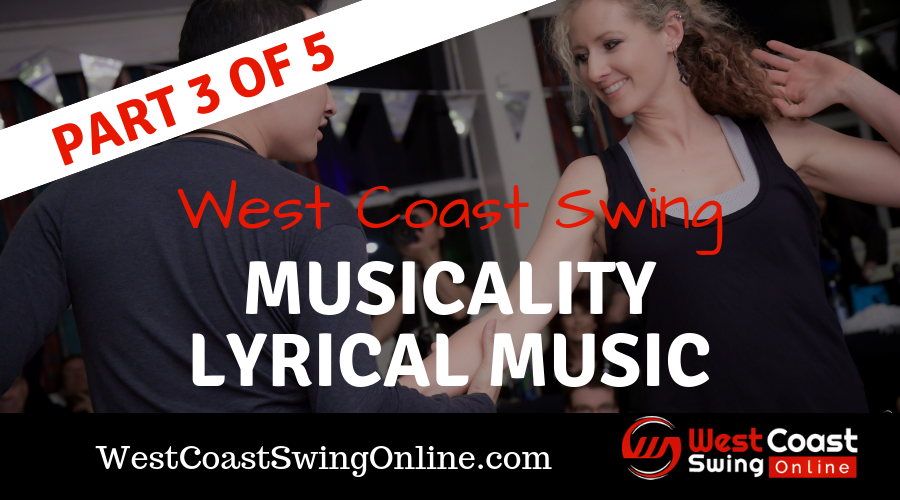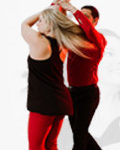If you’ve been to a WCS event in the last few years, you’ve heard lyrical music or acoustic covers played. These genres (which we’ll discuss interchangeably for this post) have rapidly become a significant part of social WCS music. This post will give you some tools for dancing to these kinds of songs.
As a friendly reminder, take a look at the caveats on this series introduction page before starting to throw these elements into your dance.
- Take out footwork. Use drags, holds, and rondes in order to match the longer vocals or drawn-out instrumental lines in the music. Learn some styling options here.
- Count the beat in your head. Acoustic music can be challenging because there’s no bass drum keeping the time. Keep the count in your head so you can stay on time even when there are gaps in the sound. If this is a struggle you’ll want to master counting straight 8’s. Watch the video here.
- Float the anchor. Lyrical music tends to dissipate rather than having a hard end. By letting the anchor float, you can replicate that feeling in your movement.
- Use long arm lines. Lyrical music is open and expressive; your arms should take the same quality by using full movements.
- Hit accents via play. Because accents tend to occur inside of phrases, it makes sense to hit accents within patterns. Play also allows a more free-form accent, which matches most acoustic songs. Watch this video first >>Learn the #1 key to musicality.
- Exaggerate the elasticity. Lyrical music stretches and breathes, so milk the elasticity in your connection to the fullest.
- Dance a wider slot. Moving side-to-side as well as up-and-down gives you another dimension to your shaping, and it embellishes the swell-and-fall of the lyrical phrase.
- Use smooth body motions. Rolls, ripples, and rondes are great ways to fill the space of the dance without adding noisy footwork.
Practice This!
Practice dancing to lyrical music using one or two or these techniques whenever possible. As you discover where specific techniques fit, experiment with new movements and keep adding to your repertoire.
Jump to the next style of music:
Return to: West Coast Swing Musicality – 4 Styles of Music





 Brian & Megan
Brian & Megan